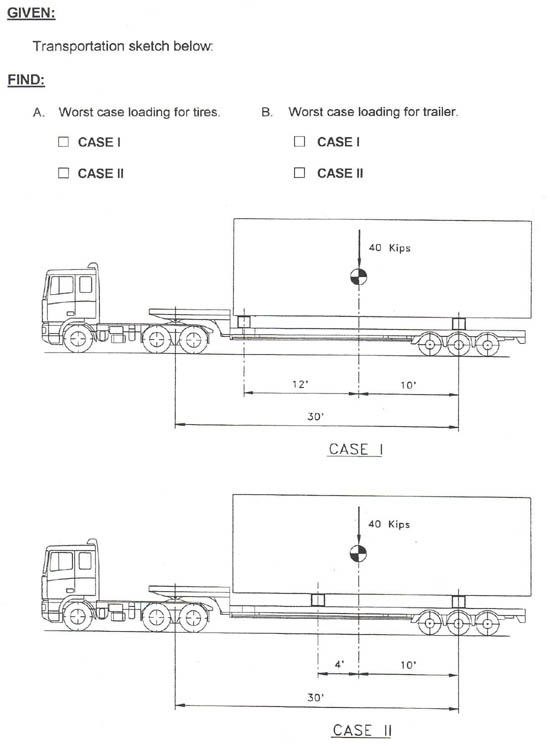
-
The answer to question "A" is that case I & case II both have the same maximum tire loading.
The loading to the tractor's rear tandem axles is 13.33 kips and the loading to the trailer's tridem axles is 26.67 kips, and it is the same loading for both case I & case II. The important thing to remember here is that once a load (and the center of gravity (C.G.)) is positioned on the trailer, the loading to the tires will remain constant, no matter how the load is supported on the trailer.
The answer to question "B" is that case II has the worst trailer loading.
In case I, the front support has a load of 18.18 kips and the rear support has a load of 21.82 kips. In case II, the front support has a load of 28.57 kips and the rear support has a load of 11.43 kips. The load to the front support for case II causes maximum bending in the trailer frame. Note that the load to the rear support and trailer frame for case II is 11.43 kips, but the load to the trailer's tridem axles due to the C.G. placement is 26.67 kips. Therefore, there are two things to consider when placing a load on a trailer. The first is placing the load to achieve optimum loading to all axles, especially if it has to be a highway legal load. The second is placing the supports under the load to minimize bending in the trailer frame.
Maximum Reach Enterprises